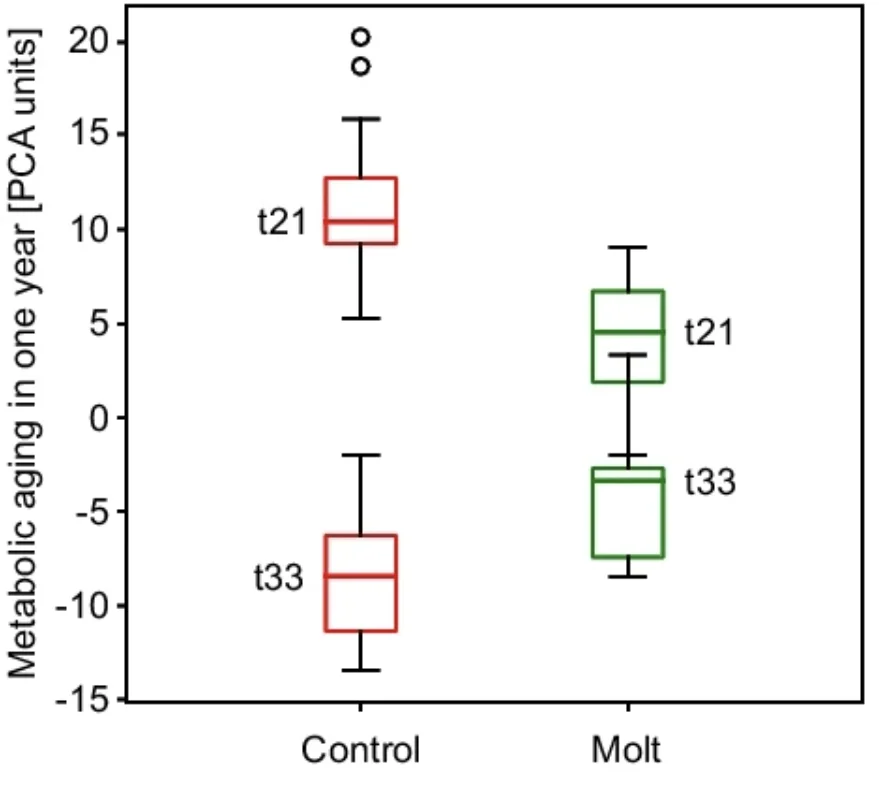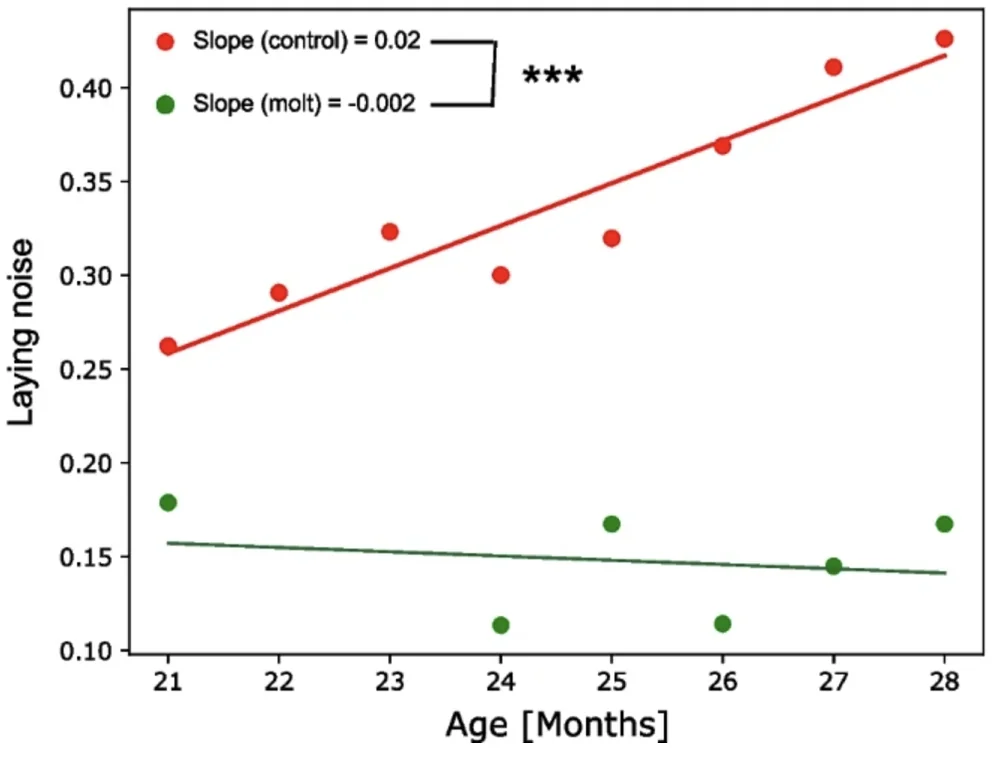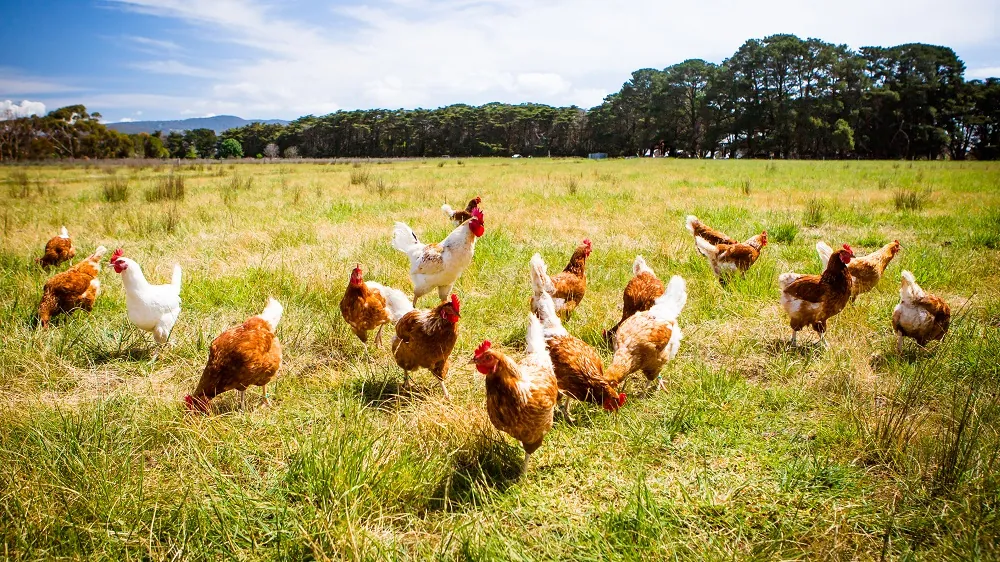According to a new study, prolonged severe caloric restriction in hens, known as “molting”, restores their egg-laying capacity, slows aging, and increases survival [1].
Lay fast, die young
The domestic hen is not the go-to animal model in aging studies, but perhaps it could offer new insights. A hen’s lifespan is about 6-8 years, which is relatively short for a bird its size. Artificial selection for reproduction may be to blame, since there seems to exist a tradeoff between reproductive capacity and longevity across the animal kingdom. However, this is not the reason why hens star in this new study published in GeroScience.
Hens are husbanded and selected for their egg-laying ability, which is nothing but impressive: an average hen lays an egg almost daily. However, as hens rapidly age, egg production begins to dwindle, until it drops below the level of commercial viability at around the age of two years.
Farmers have long practiced an unusual way to extend hens’ reproductive life: by severe, prolonged caloric restriction called “molting”. During molting, hens shed their feathers and lose about 30% of their body weight, but amazingly, their egg-laying capacity gets restored almost to peak levels. While this phenomenon has been a topic of agricultural research, this may be the first time it has been investigated in the context of aging.
Increased survival
The researchers raised a cohort of 64 hens and at the age of 21 months, randomly assigned them to two groups, one of which was fed ad libitum during the whole experiment, while the other was subjected to a ten-day molting and then to slow refeeding. As expected, molting was accompanied by feather shedding, weight loss, and complete cessation of egg-laying.
All these features were reverted following the refeeding, including the restoration of egg-laying capacity, which, in the control cohort, continued to dwindle. All 32 animals weathered the molting well, although three hens became sterile for unknown reasons, which did not affect the data analysis.
More importantly, molting seemed to profoundly affect survival. While the researchers did not follow the hens through their whole lifespan, by the age of 33 months, 34% of the control hens had died, while only 13% of the molted hens had done so. This is a statistically significant difference that suggests extended healthspan (compressed mortality) or lifespan. By that time, molted hens also weighed significantly more on average than the controls, possibly due to metabolic rejuvenation.
Slower metabolic aging
The researchers turned next to metabolism, developing an array of biomarkers to capture metabolic aging. It turned out that molted hens had experienced 25% slower metabolic aging. This is especially impressive considering that, despite randomization, baseline metabolic age at 21 months happened to be higher in the molting group. The researchers created a separate biomarker panel for reproductive aging, which was considerably slower in molted animals as well. Molting was also shown to slow down immune aging as measured by a panel of nine immuno-proteins.

The researchers also employed another interesting measure of aging: metabolic noise, or an increase in heterogeneity of various metabolic parameters in the population. This group had previously found metabolic noise to be a feature of aging in hens, humans, and mice [2]. Simply speaking, the older we get, the more metabolically diverse we become.
The researchers analyzed the noise of the entire metabolome in the molted group and in controls. Interestingly, molting reduced the heterogeneity of the metabolome: that is, metabolically, the hens became more alike. The same happened with the panel of biomarkers that represent laying capacity: in controls, its heterogeneity went up linearly, but it kept steady and even slightly declined in the molted population.

AKG as a common denominator
Since laying hens are a product of severe artificial selection, the researchers were concerned that their findings might not be relevant to other vertebrates. They, therefore, “looked for features that appear both as aging and reproductive biomarkers and were also consistent with molting slowing down aging and improving performance”.
In this analysis, α-ketoglutarate (AKG) stood out. This molecule has been on geroscientists’ radars for some time now since it extends lifespan in various animal models [3]. Pathway enrichment analysis revealed that all top aging and laying markers in hens were associated with AKG, suggesting similarity with other vertebrates.
While this study might not be immediately relevant to humans, it offers new insights into the rejuvenating potential of prolonged fasting. A lot of research has been done on various fasting regimens, but studies of this particular kind of caloric restriction are still sparse.
This study combined physiological assays, metabolic profiling, and cytokines arrays as a non-invasive methodology to quantify the systemic effect of molting on senesce and reproductive aging. Computational and machine learning schemes identified metabolic biomarkers that accurately and quantifiably predicted metabolic age and reproduction. Together, the molecular and physiological data indicated that molting systemically slowed down aging and even rejuvenated the hens. Furthermore, the aging biomarkers revealed metabolic changes in the molted cohort that are associated with the general process of aging, rather than the specific process of molting in hens.
Literature
[1] Levkovich, G., Bendikov-Bar, I., Malitsky, S., Itkin, M., Rusal, M., Lokshtanov, D., … & Sagi, D. (2023). Reduction in metabolic noise reveals rejuvenation following transient severe caloric restriction. GeroScience, 1-16.
[2] Bendikov-Bar, I., Malitsky, S., Itkin, M., Rusal, M., & Sagi, D. (2021). Metabolomic changes are predictive of aging in laying hens. The Journals of Gerontology: Series A, 76(10), 1757-1768.
[3] Shahmirzadi, A. A., Edgar, D., Liao, C. Y., Hsu, Y. M., Lucanic, M., Shahmirzadi, A. A., … & Lithgow, G. J. (2020). Alpha-ketoglutarate, an endogenous metabolite, extends lifespan and compresses morbidity in aging mice. Cell metabolism, 32(3), 447-456.




